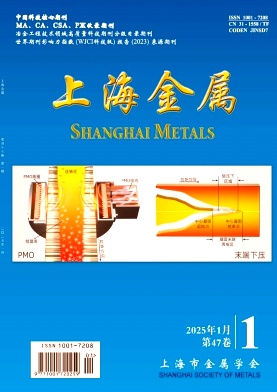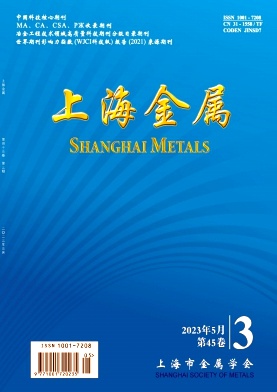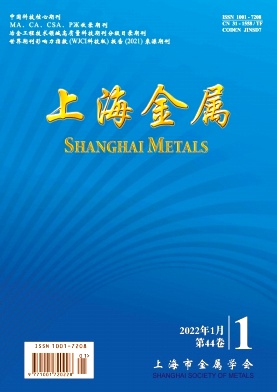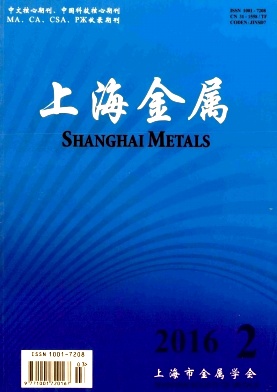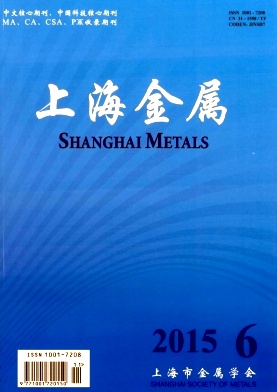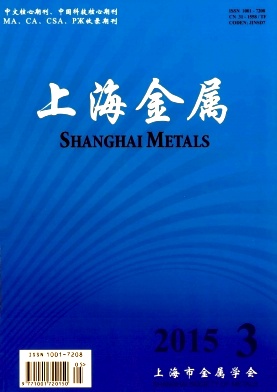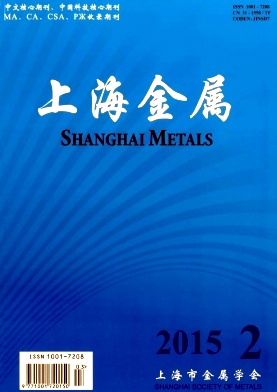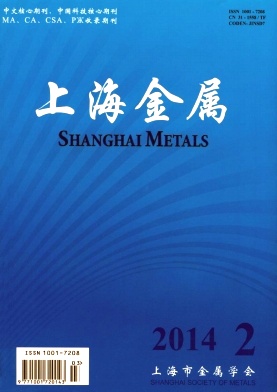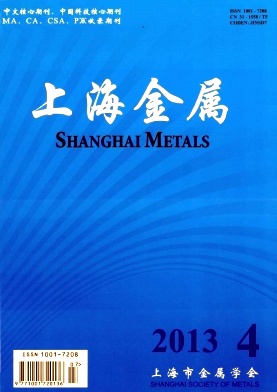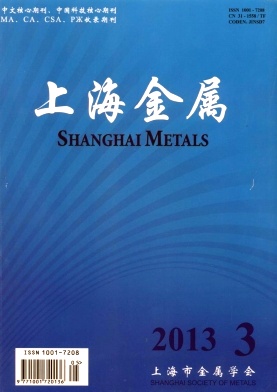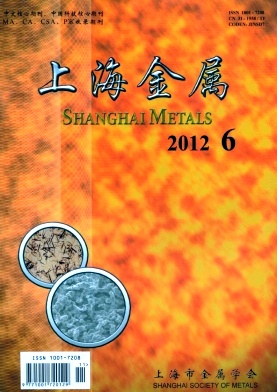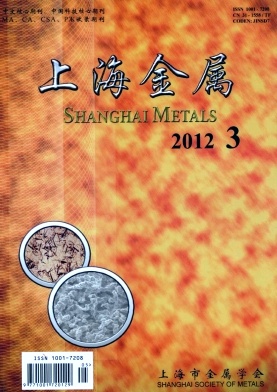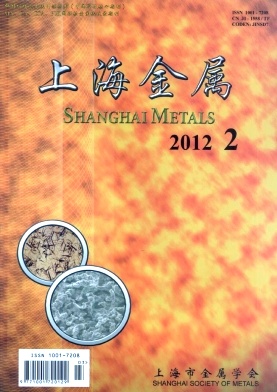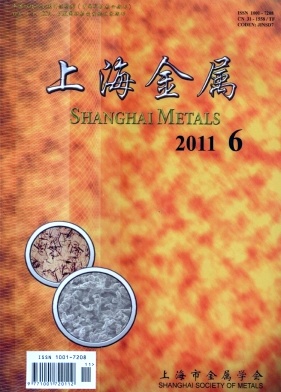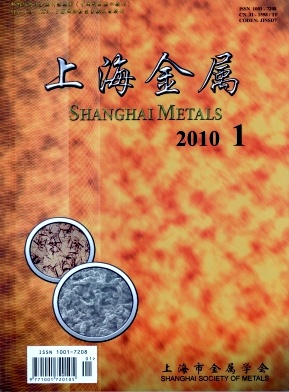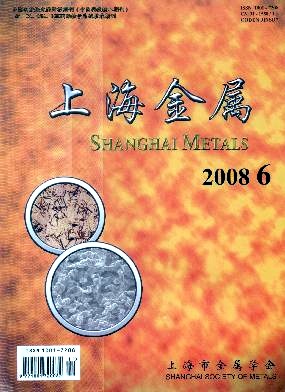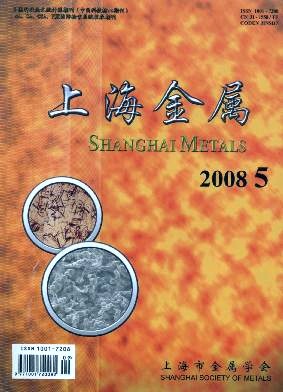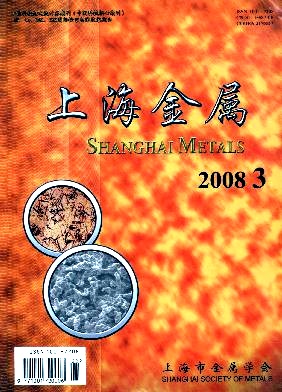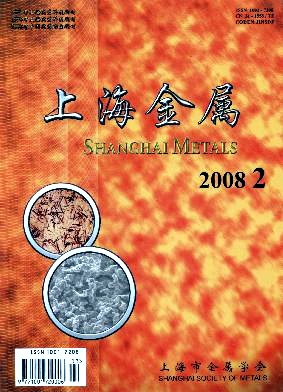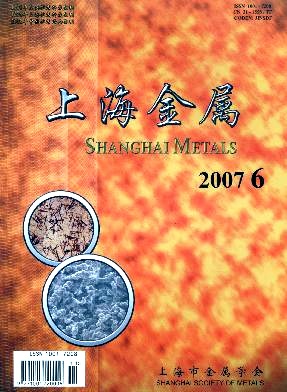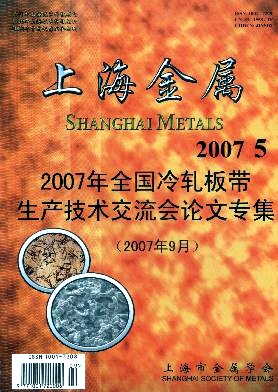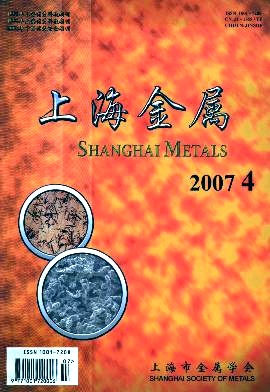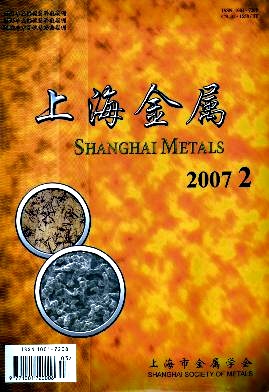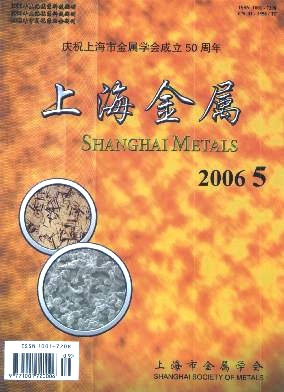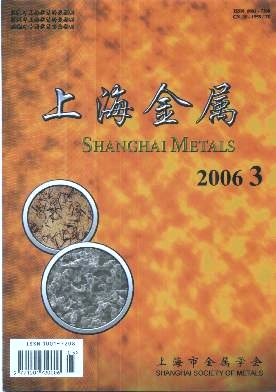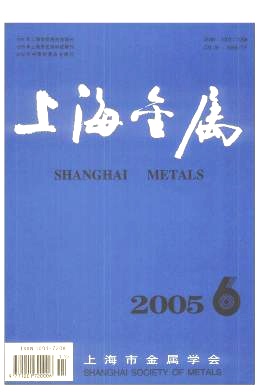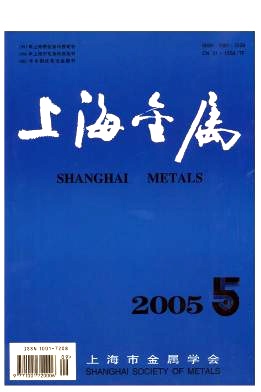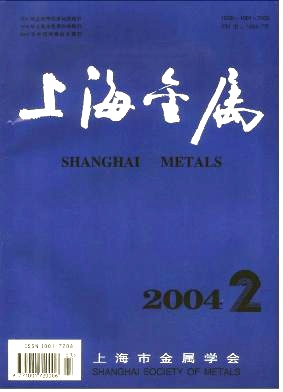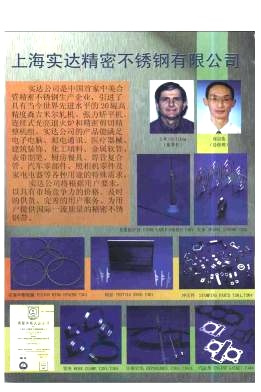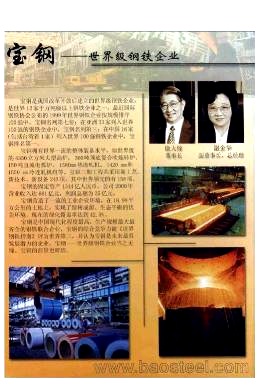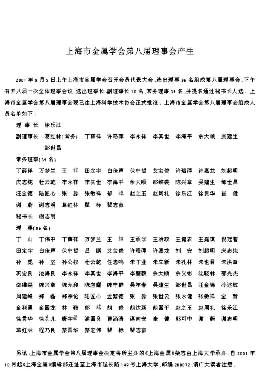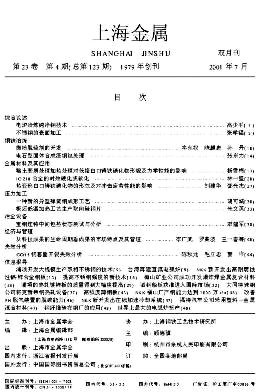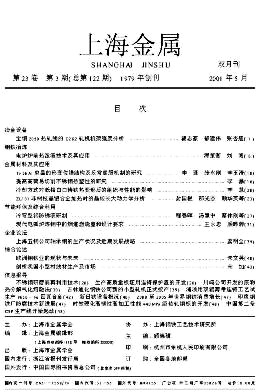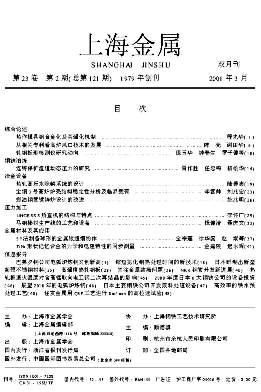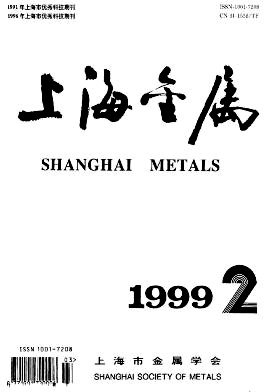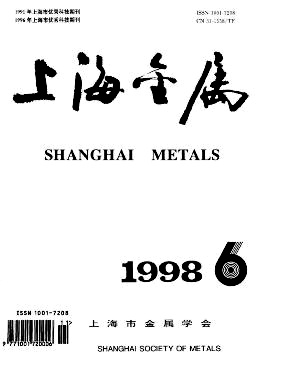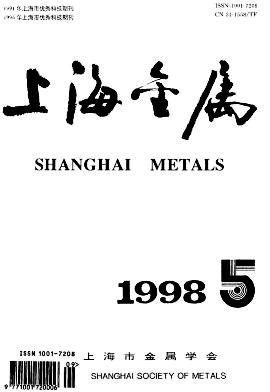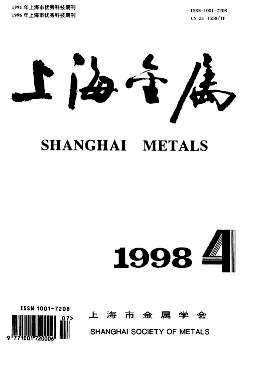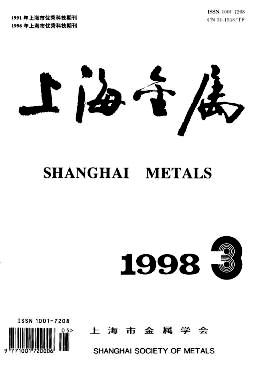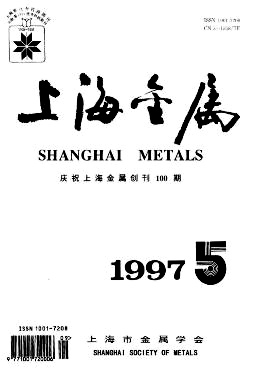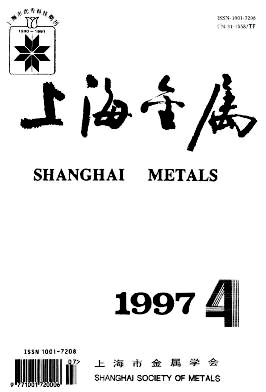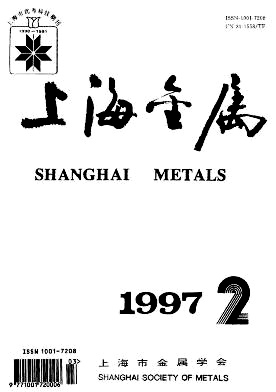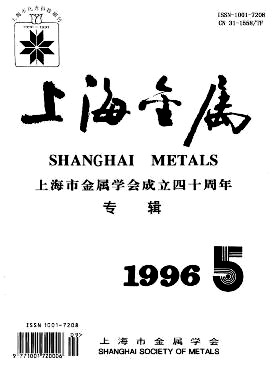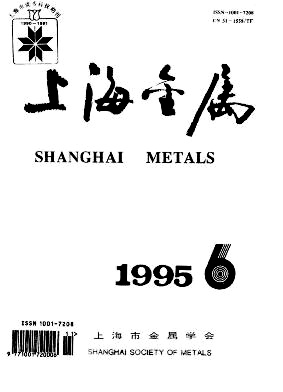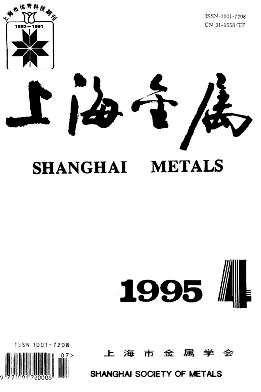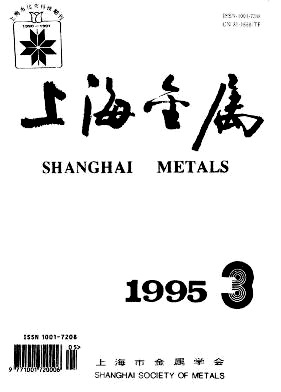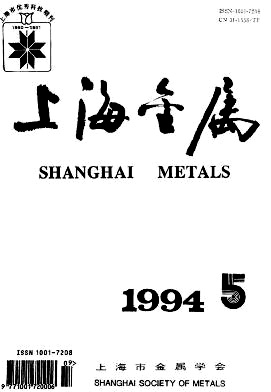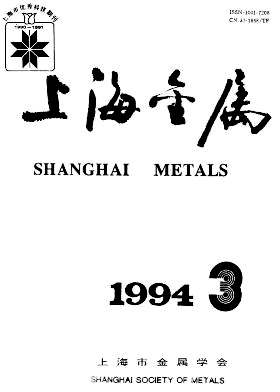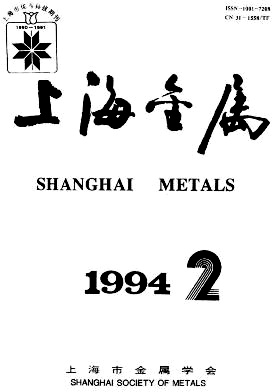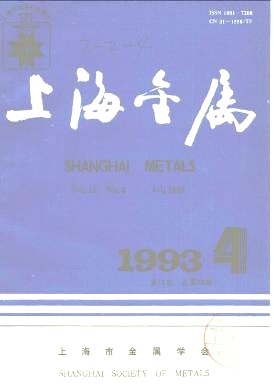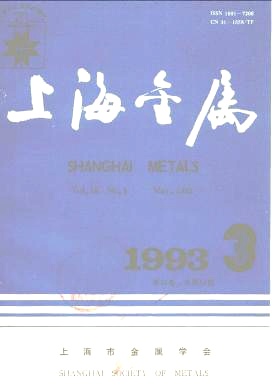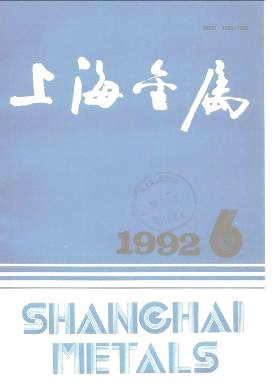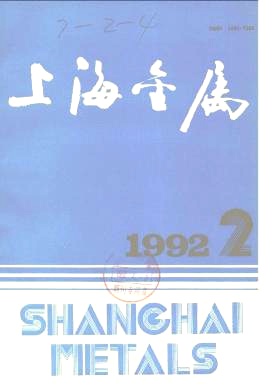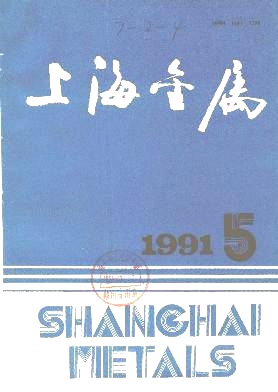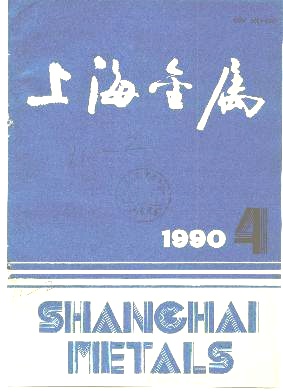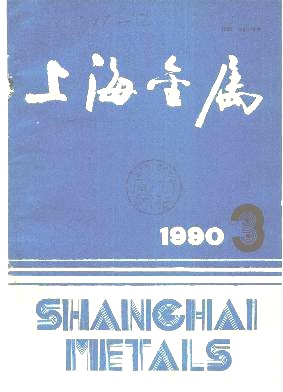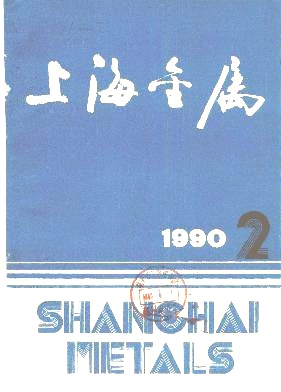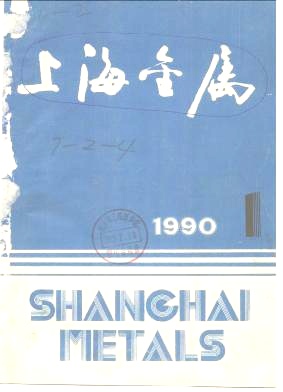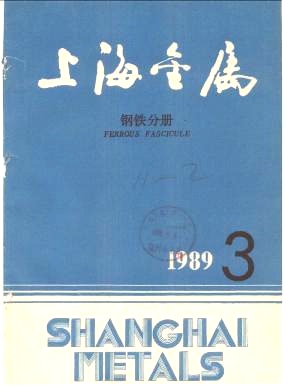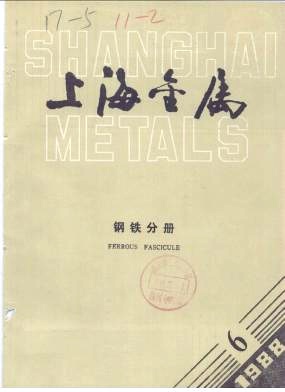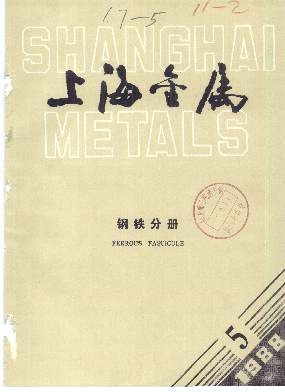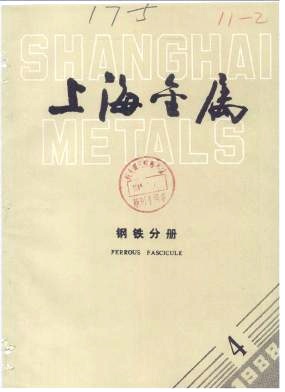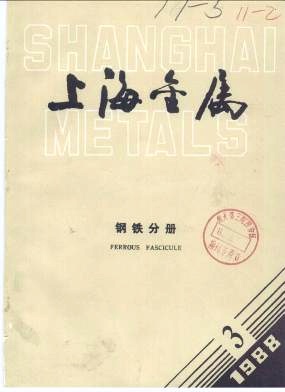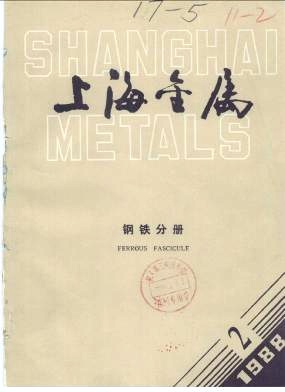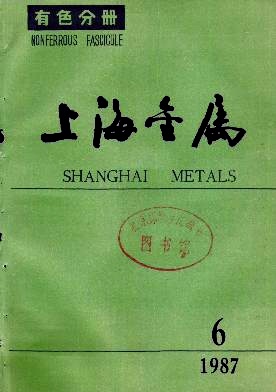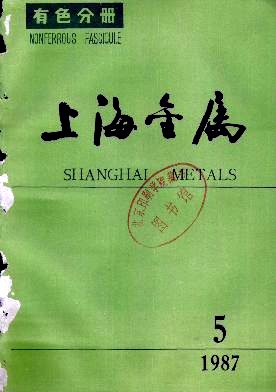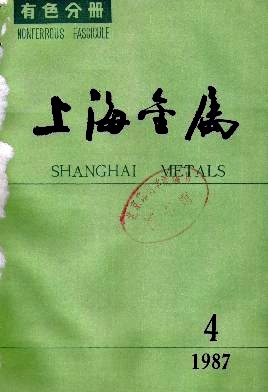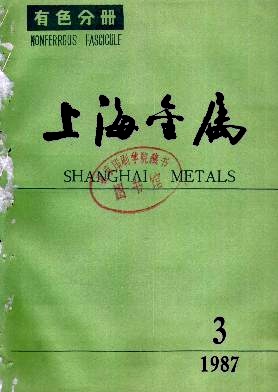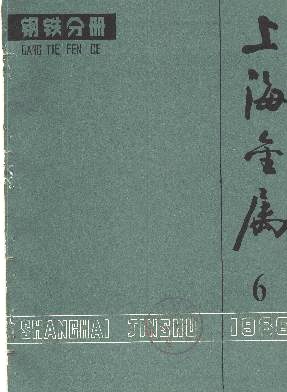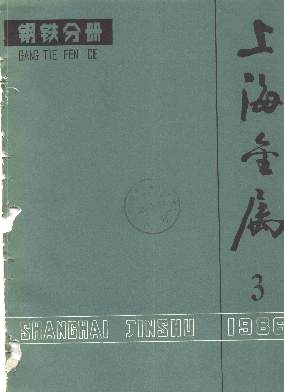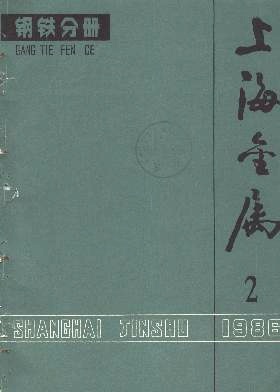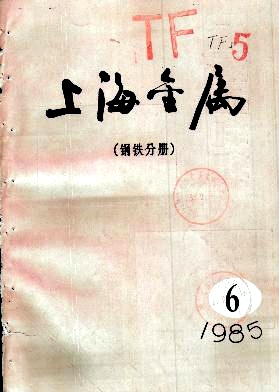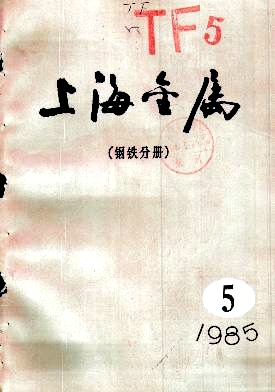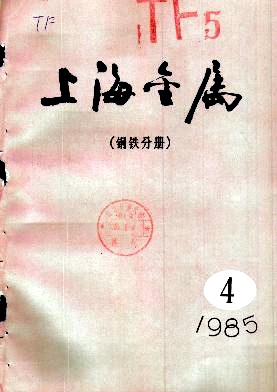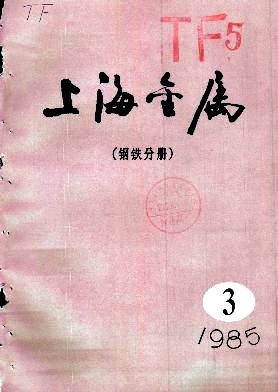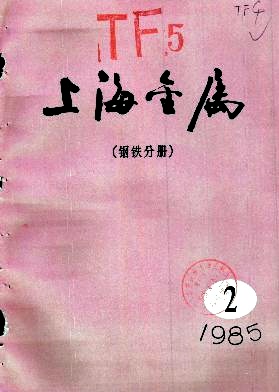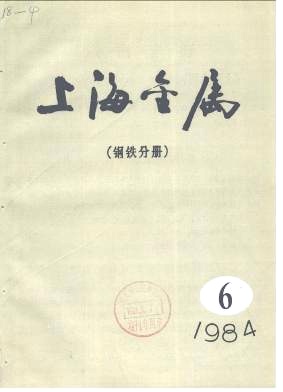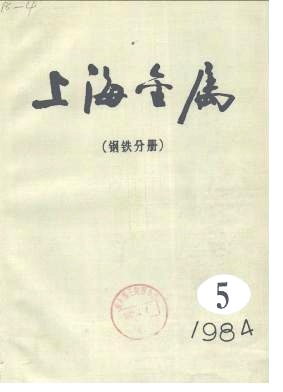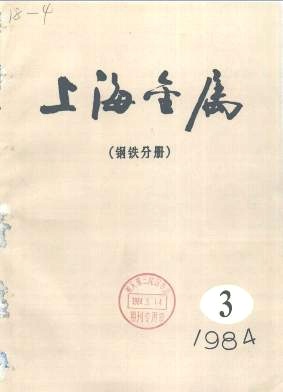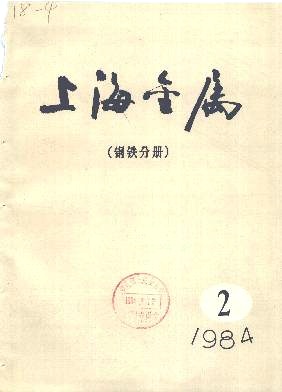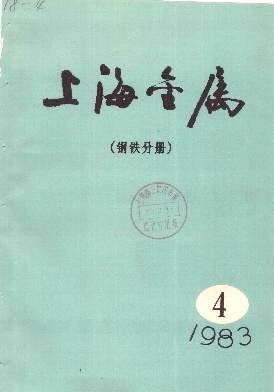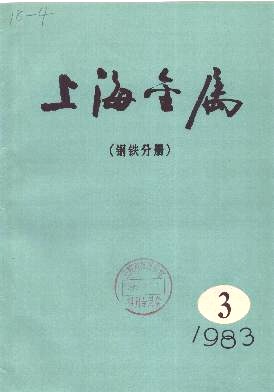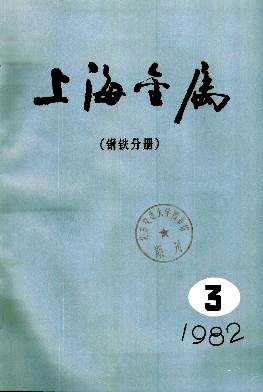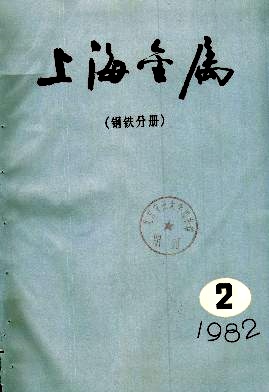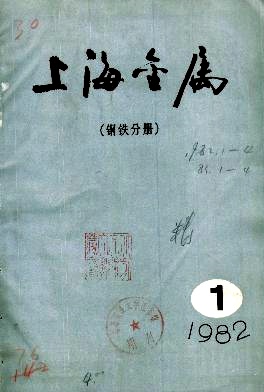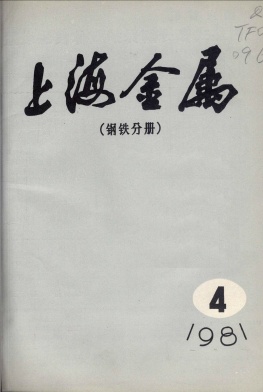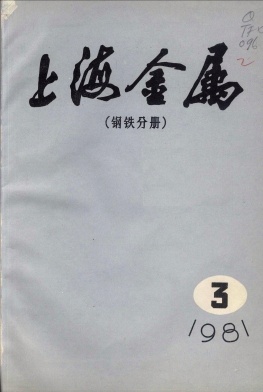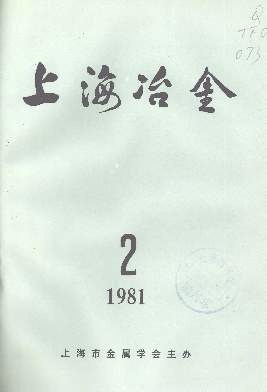
Tracking the information about your manuscript
Communicate with the editorial office
Query manuscript payment status Editing OfficeCollecting, editing, reviewing and other affairs offices
Managing manuscripts
Managing author information and external review Expert Information Expert Office Online Review
Online Communication with the Editorial Department
Information
Journal Name: Shanghai Metals
Founding Date: 1979, Bimonthly
Supervising Department: Shanghai Association for Science and Technology
Sponsoring Organization: Shanghai Society of Metals
Undertaking Organization: Shanghai University
Chinese Domestic Uniform Serial Number:
International Standard Serial Number
Page Views
Page visits today: 0
Journal Introduction
《Shanghai Metals》is a technical journal sponsored by Shanghai Metal Society and undertaken by Shanghai University. It is a professional (iron & steel) metallurgy journal publicly issued at home and abroad in Shanghai, founded in 1979. The journal is included in the T3 level of 《Classification Catalogue of High-Quality Scientific and Technological Journals in Metallurgical Engineering and Technology Field 》, as well as the《World Journal Impact Factor (WJCI) Report (2023 Science and Technology Edition) 》. It is recognized as a Core Journal of China Science and Technology, an RCCSE China Core Academic Journal, and a National Statistical Source Journal, and is indexed by international retrieval systems such as CA, INSPEC, EBSCO, and JST. The journal primarily introduces and reflects the scientific research, development, and technological advancements in metallurgy and metal materials at home and abroad. It publishes new technologies and achievements in metallurgy, metal materials, and their applications that are advanced in China and hold practical promotion significance, aiming to promote the modernization of China's metallurgical and metal materials industry and facilitate international scientific and technological exchanges.
Analysis on Development Status Quo of Machine Learning and Its Application in Laser Additive Manufacturing
LI Xiang;ZHANG Liang;LI Jingwei;Laser additive manufacturing technology can quickly manufacture parts with complex shapes and structures, and high dimensional accuracy, are widely used in fields such as automotive, aerospace, and medical devices. In the process of laser additive manufacturing, a large number of trial and error are required to obtain both the alloys with better performance and the process parameters suitable for different materials, which are time-consuming and costly. By inputting experimental data and using specific algorithms the machine learning establishes a model which can be generalized and continuously increase the accuracy of results through self-updating and optimization, effectively predict the composition, performance, and defects of additive manufacturing materials, and has broad development prospects in the aspect of development of high-performance auxiliary materials. The application examples of the machine learning in the laser additive manufacturing in recent years were summarized from the above three aspects, and finally its future development trends and application directions were proposed.
Structural Transformation in GCr15 Bearing Steel during Cooling from Austenitizing Temperature
REN Jun;LI Huigai;In order to explore the mechanism whereby Widmannstaetten structure and acicular ferrite form in GCr15 bearing steel, the casting billet and the wire of GCr15 bearing steel were cooled at a set rate of 30 ℃/min from 900 to 600 ℃ then air cooled to room temperature. The structural transformation in the casting billet and the wire during cooling from 900 to 600 ℃was in-situ detected by metallographic microscope and scanning electron microscope. The results showed that(a) the average size of austenite grains was 237 μm in the casting billet and 145 μm in the wire;(b) in the process of cooling at a rate of 30 ℃/min from 900 to 600 ℃, the Widmannstaetten structure formed in the casting billet but did not form in the wire due to their difference in the average size of austenite grains; and(c) the nucleation and growth of intragranular acicular ferrite on Al2O3 measuring less than 6 μm occurred in both the casting billet and the wire.
Effect of Copper- Rich Phase on Precipitation of G- Phase in 17- 4PH Stainless Steel during Aging at 400 ℃
ZHANG Chunfeng;WANG Zemin;LIU Wenqing;17-4PH stainless steel was solution treated by heating at 1 040 ℃ for 1 h followed by water cooling, then tempered at 580 ℃ for 4 h to precipitate the copper-rich phase and long-term aged at 400 ℃. The influence of copper-rich phase on the precipitation of G-phase in 17-4PH stainless steel during the aging and the change of its hardness with the microstructure of G-phase were studied by microhardness tester, atom probe tomography(APT), and high-resolution transmission electron microscope(HRTEM). The results showed that(a) the hardness of the tempered and aged samples was lower than that of the directly aged samples;(b) Ni and Mn elements were enriched around the coarse Cu-rich phase generated during pre-tempering, and in the process of the subsequent aging, Si elements segregated in the nickel-and manganese-enriched regions, thus accelerating the transformation of Ni-Mn-Si clusters into the G-phase.
Phase Transformation Characteristics and Mechanical Properties of 1300 MPa Grade Low- Alloy 20SiMnMo Steel
ZHANG Xiaozhe;GE Chen;ZHAO Hongshan;LIU Guangmu;DONG Han;On the basis of the composition of 25CrNiMo steel, a 1 300 MPa grade low-alloy 20SiMnMo steel was designed by composition optimization, that is, by substitution of SiMn for CrNi. A comparative study was performed on the phase transformation characteristics, microstructure and mechanical properties of two types of steels through empirical formula calculation in conjunction with thermal expansion test, scanning electron microscope, electron back scatter diffraction, hardness test, tensile test, and impact test. The results showed that 20SiMnMo and 25CrNiMo steels were similar in critical rates to achieve bainite and martensite, being 1 ℃/s for bainite and 5 ℃/s for martensite, respectively; the yield strength and tensile strength of 20SiMnMo steel tempered at 300 ℃ were 1 316 and 1 546 MPa, respectively, and the impact absorption energies at room temperature and-40 ℃ were 70 and 25 J, respectively, achieving a similar combination of strength and toughness to that of 25CrNiMo.
Study on Mechanism of Influence of Water Vapor on Internal Oxidation of Hot- Rolled Advanced High- Strength Steel Sheet
ZHANG Yaoze;WU Guangxin;YAN Dingfeng;Due to higher manganese and silicon contents, selective oxidation will occur in the advanced high-strength steel sheet during high-temperature coiling, which will exert an influence on the efficiency of subsequent acid pickling, and surface quality of the sheet is likely to be reduced in the presence of water vapor. For this reason, the effects of water vapor on the occurrence of internal oxidation in the advanced high-strength steel sheet containing 0.18%C, 1.80%Si and 2.50%Mn by mass during the high-temperature coiling was investigated. The results showed that(a)the presence of water vapor resulted in a significant increase in the internal oxidation depth in the high-strength steel sheet, and had an effect on constituent of the oxide scale;(b) the reduced iron grew outward from the interface between the oxide scale and the substrate in the atmosphere with water vapor, and grew inward from the surface of the oxide scale in a dry atmosphere; and(c) the presence of water vapor did not result in significant increase in decarburization depth in the steel sheet.
Research on Stable and Efficient Operation of Continuous Casting Process under Special Line and Laminar Flow Mode
CUI Huaizhou;ZENG Jiaqing;ZHANG Junguo;ZHAO Jinxuan;LIN Lu;HE Qing;DAI Yuxiang;To accelerate and stabilize the operation rhythm of the continuous casting process, to meet the laminar flow special line production requirement in the steelmaking section, for the problems of longer and more unstable continuous casting cycle in a steel plant, based on the technology and equipment regime of the continuous casting process in this plant, the relationships between continuous casting cycle and molten steel volume, and between billet section size and casting speed were investigated, and the cause of variation in casting speed was analyzed. The results indicated that (a) the abnormal variations in casting speed and intra-casting-speed had more significant influence on the continuous casting cycle; and (b) the main causes of variations in casting speed included the online width adjustment of the mold, the slow rhythm of the upstream processes, the reduction in casting speed caused by equipment failure, and the improper control of superheat degree. After optimizing both the relevant process and the operating systems on the basis of the foregoing causes, the average continuous casting cycle for SPHC steel was shortened from 37.5 min to 34.4 min, and the fluctuation range was decreased from 28-to-58 min to 29-to-46 min, being able to provide support for the laminar flow special line production in the steelmaking section.
Optimization of Process for Forming Large Layer-Thickness M789 Maraging Steel by Selective Laser Melting and Its Microstructure and Properties
GUO Xiliang;HOU Yuan;M789 maraging steel layer with thick of 50 μm was formed on the 304 stainless steel substrate plate by selective laser melting(SLM). The effects of laser power (270 to 370 W), scanning speed (800 to 1 100 mm/s), and scanning spacing (0.09 to 0.12 mm) on the density of the specimens were investigated. The results showed that when the energy density was 80 J/mm3, the density of the samples formed by the optimized parameters (laser power of 370 W, scanning speed of 965 mm/s, scanning spacing of 0.096 mm) reached 99.98% at XY cross-section and 99.99% at XZ cross-section, respectively, meeting the requirement in ASTM E8 standard (no lower than 99.9%). The samples solution treated by heating at 1 000 ℃ for 2 h then aged at 500 ℃for 3 h exhibited the microstructure consisting of homogeneous fine-grained tempered martensite dispersed with spherical secondary precipitates, hardness of 51.5 to 52.5 HRC, tensile strength of (1 820±10) MPa, yield strength of (1 780±10) MPa, and elongation of (15±1.5)%, meeting the service requirements of M789 die steel.
Effect of Starting Rolling Temperatures on Rolling Force and Temperature of Rolled Piece of SWRCH22A Cold Heading Steel
LI Jiajun;XING Yujie;PENG Xingdong;Stress-versus-strain curve of SWRCH22A cold heading steel was determined via a Gleeble-3800 thermal simulation tester. The 1 to 14 passes of the rough rolling and intermediate rolling stages of SWRCH22A steel was simulated on the basis of Deform finite element simulation software. The effects of starting rolling temperatures of 1 010, 1 060 and 1 100 ℃ on the rolling force and temperature of rolled piece for SWRCH22A steel were investigated. The results indicated that (a) with the rise in starting rolling temperature, SWRCH22A steel decreased in the rolling force; (b) the rolling force of the 3rd pass during rolling process starting at 1 010 and 1 100 °C was larger than that of the 2nd pass and instable; (c) the rolling force of 2nd and 3rd, 6 and 7th, and 10th and 11th passes during rolling process starting at 1 060 °C reduced significantly and was relatively stable; (d) the temperatures of rolled piece decreased markedly in edge and had no evident change in core; (e) the increases in roll opening, groove height and spread for 2nd and 3rd passes were able to make rolling process significantly stable; and (f) the most preferable starting rolling temperature was 1 060 ℃ for SWRCH22A cold heading steel.
Effect of Rare Earth Elements Such as Lanthanum and Cerium on Microstructure and weldability of Q355B Steel
XIAO Hailin;SUN Tao;FAN Zengwei;PEI Xinhua;LIU Yubao;ZHAO Yangyang;LIAN Xintong;DONG Han;Effect of rare earth elements such as La and Ce on microstructure and weldability of Q355B steel were investigated by optical microscope, scanning electron microscope, tensile tester and impact tester. The results showed that the Q355B steel to which the trace La and Ce elements were added exhibited microstructure consisting of ferrite and pearlite, no banded structure in the rolling direction, significantly refined grains, and improved microstructure uniformity. In addition, the large-sized elongated MnS inclusions were modified into small-sized spherical rare earth oxy-sulfide composite inclusions in the steel, the hardness and tensile properties of the welded joint were significantly improved, the grains in the heat-affected zone were refined, and the impact toughness was obviously enhanced.
Effect of Aging Process on Tensile Properties and Friction-Wear Resistance of 17-4PH Stainless Steel
LIU Xin;JIN Man;LU Shijia;HU Yangyu;LI Junwan;Effect of aging process on the tensile properties and friction-wear resistance of 17-4PH martensitic precipitation hardenable stainless steel was studied by scanning electron microscope and energy dispersive spectrometer, Vickers hardness tester, tensile tester, X-ray diffractometer, friction and wear tester. The results showed that (a) as the aging temperature increased, the 17-4PH stainless steel increased at first and then decreased in both strength and hardness, and increased gradually in plasticity, and the steel exhibited tensile strength as high as 1 377.2 MPa, yield strength as high as 1 326.7 MPa, and hardness as high as 462.7 HV0.5; (b) the optimal heat treatment practice was solution treatment at 1 040 ℃ for 1 h followed by water cooling, then aging at 480 ℃ for 4 h followed by water cooling; (c) the main wear mechanism was abrasive wear and adhesive wear. The wear resistance of 17-4PH steel heat treated by the above-named optimal process was 2 times larger than that of 17-4PH steel heat treated by the original process.
THE NEW GENERATION TMCP WITH THE KEY TECHNOLOGY OF ULTRA FAST COOLING
Wang Guodong (The State Key Lab of Rolling and Automation,Northeastern University;Rolling Technology Research Base,National Engineering Research Center of Advanced Steel Technology)In order to inhibit troubles occurred in the traditional TMCP process which adopted low temperature high reduction and micro-alloying,new generation TMCP with key technology of ultra fast cooling was suggested.This tech,its characteristic and material properties were described herein,was the combination of large deformation and strain accumulation in continuous rolling.It was also pointed that this tech,being favor to recycling and stimulating sustainable development,was a new type of technology which saved resource and energy.
[Downloads: 1,643 ] [Citations: 326 ] [Reads: 2 ] HTML PDF Cite this article
PROGRESS ON METAL MATERIALS USED IN THE ULTRA LIGHT AUTO BODY
Xu Luoping Shao Guangjie Li Lin Zhang Henghua (Shanghai University)The metal materials and the technology used in the ultra light auto body both at home and abroad were reviewed,including the advanced aluminum alloy,high strength steel sheet(TRIP Steel) and the semisolid forming of aluminum alloys.The technical progress was also introduced. [
RECENT PROGRESS ON SURFACE TREATMENT TECHNOLOGIESOF TITANIUM AND TITANIUM ALLOYS
He Lijian Zhang Xiaonong (State Key Laboratory of Metal Matrix Composites, Shanghai Jiaotong University)Titanium and titanium alloys possessed many advantages, including high strength and low density, good corrosion-resistance and good high temperature properties. Titanium and titanium alloys were widely used in the space flight and aeronautic industries, the martial industry and domestic industry. But the low hardness and wear-resistance confined the further application of these materials. It was possible to improve the surface properties of these materials by proper surface treatment. The application and newly progress of several surface treatment technologies were summarized, including laser remelting, CVD, PVD, thermo-diffusion and nanostructured surface. The multi-composition and multi-layer were also mentioned.
THE DEVELOPMENT STATUS OF BEARING STEEL AND ITS GRADES SERIES
Yu Mingquan(1.School of Materials Science and Engineering,Shanghai University;2.Speecial Steel Branch,Baoshan Iron & Steel Co.,Ltd.)Complement of bearing steel series in the world was obtained after the 100 year development,which included the high carbon-chromium bearing steels,carbonized bearing steels,medium carbon bearing steel,stainless bearing steels and high temperature bearing steels.All the bearing steels stated above were produced on the special production lines with matured technologies.The production capability of bearing steels in China was over 2 million t/a,but there were still many problems in the manufacture of bearing steels such as the steel grades,standards,actual quality of finished products,special production lines.The directions of research and development in bearing steels all over the world were the super clearness(O+Ti≤10μg/g),the perfect uniformity with carbide in bearing steel and the reducing of manufacture cost,the developments of long-service life special steel grades used for the conditions of particular environment and services.
[Downloads: 3,064 ] [Citations: 143 ] [Reads: 5 ] HTML PDF Cite this article
CURRENT DEVELOPMENT OF MODERN POWDER METALLURGY MATERIALS AND TECHNOLOGIES (Ⅰ)
Huang Baiyun Yi Jianhong(State Key Laboratory of Powder Metallurgy,Central South University)The current development of modern powder metallurgy materials and technologies was reviewed.The basic characteristics,applications and developmental trend of traditional and advanced powder metallurgy materials were also introduced.Meanwhile,the research and development of new powder metallurgy technologies,such as mechanical alloying,powder injection molding,warm compaction,spray forming,microwave sintering,spark plasma sintering,self-propagation hightemperature synthesis,sinter hardening,were also described.The article is issued in two parts.
[Downloads: 7,672 ] [Citations: 143 ] [Reads: 4 ] HTML PDF Cite this article
CURRENT DEVELOPMENT OF MODERN POWDER METALLURGY MATERIALS AND TECHNOLOGIES (Ⅰ)
Huang Baiyun Yi Jianhong(State Key Laboratory of Powder Metallurgy,Central South University)The current development of modern powder metallurgy materials and technologies was reviewed.The basic characteristics,applications and developmental trend of traditional and advanced powder metallurgy materials were also introduced.Meanwhile,the research and development of new powder metallurgy technologies,such as mechanical alloying,powder injection molding,warm compaction,spray forming,microwave sintering,spark plasma sintering,self-propagation hightemperature synthesis,sinter hardening,were also described.The article is issued in two parts.
[Downloads: 7,672 ] [Citations: 143 ] [Reads: 4 ] HTML PDF Cite this article
CHEMICAL PREPARATION AND APPLICATION OF MAGNETIC Fe3O4 NANO-PARTICLES
Li Chengkui Qi Hongzhang Yan Biao (Shanghai Key Lab.of D & A for Metal-Functional Materials,School of Materials Science and Engineering,Tongji University)The chemical preparation methods were summarized including co-precipitation,sol-gel method,micro emulsion,hydro-thermal method etc.Based on the recent progress,relative merits of those methods were analyzed.The application of Fe3O4 nano-particles in magnetic fluid,magnetic recording materials,catalytical and microwave materials and medicine were introduced.
CURRENT DEVELOPMENT OF MODERN POWDER METALLURGY MATERIALS AND TECHNOLOGIES(Ⅱ)
Huang Baiyun Yi Jianhong(State Key Laboratory of Powder Metallurgy,Central South University)The current development of modern powder metallurgy materials and technologies was reviewed.The basic characteristics,applications and developmental trend of traditional and advanced powder metallurgy materials were also introduced.Meanwhile,the research and development of new powder metallurgy technologies,such as mechanical alloying,powder injection molding,warm compaction,spray forming,microwave sintering,spark plasma sintering,self-propagation hightemperature synthesis,sinter hardening,were also described.The article is issued in two parts.
Progress in Research on Additive Manufactured Metallic Materials Reserved for Aerospace Field
SUN Xuan;HU Bin;XIONG Zhihui;LIU Shilong;YU Yishuang;Shanghai Civil Aviation College;Starting with the demand for additive manufactured metallic materials in the aerospace field, the applications and market scale of the additive manufactured metallic materials in aerospace field were introduced. The microstructure and mechanical properties of additive manufactured alloys, including iron-and nickel-base alloys, titanium alloy and aluminum alloy, were reviewed. The typical examples of application of the four types of additive manufactured alloys to key components in aerospace field were summarized. Finally, the existent problems and future research directions of the additive manufactured metallic materials reserved for the aerospace field were pointed out.
THE DEVELOPMENT STATUS OF BEARING STEEL AND ITS GRADES SERIES
Yu Mingquan(1.School of Materials Science and Engineering,Shanghai University;2.Speecial Steel Branch,Baoshan Iron & Steel Co.,Ltd.)Complement of bearing steel series in the world was obtained after the 100 year development,which included the high carbon-chromium bearing steels,carbonized bearing steels,medium carbon bearing steel,stainless bearing steels and high temperature bearing steels.All the bearing steels stated above were produced on the special production lines with matured technologies.The production capability of bearing steels in China was over 2 million t/a,but there were still many problems in the manufacture of bearing steels such as the steel grades,standards,actual quality of finished products,special production lines.The directions of research and development in bearing steels all over the world were the super clearness(O+Ti≤10μg/g),the perfect uniformity with carbide in bearing steel and the reducing of manufacture cost,the developments of long-service life special steel grades used for the conditions of particular environment and services.
[Downloads: 3,064 ] [Citations: 143 ] [Reads: 5 ] HTML PDF Cite this article



